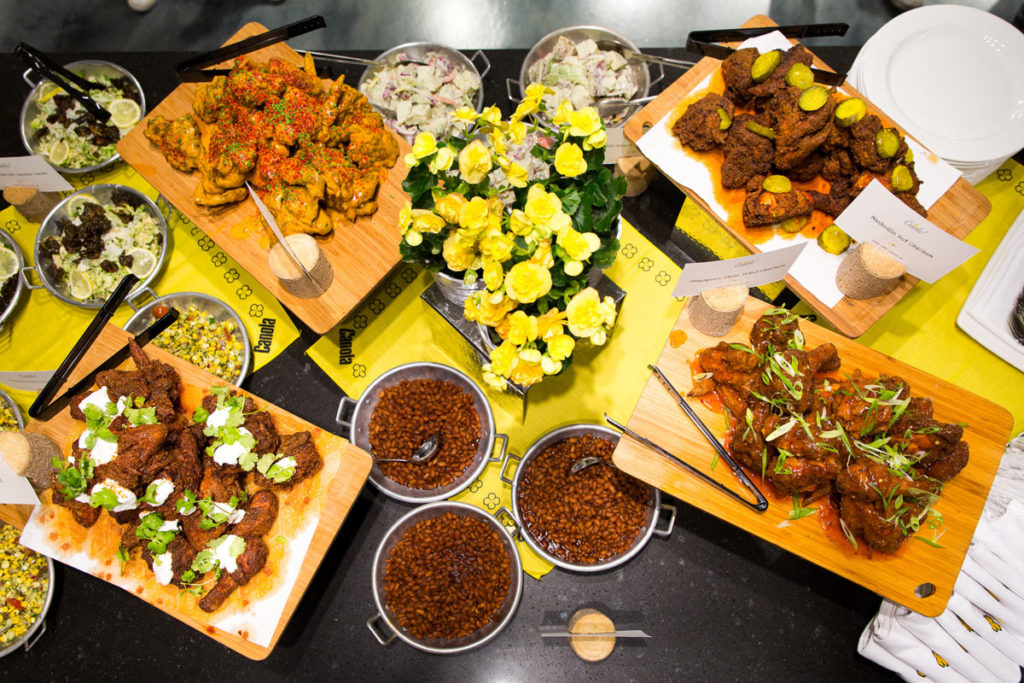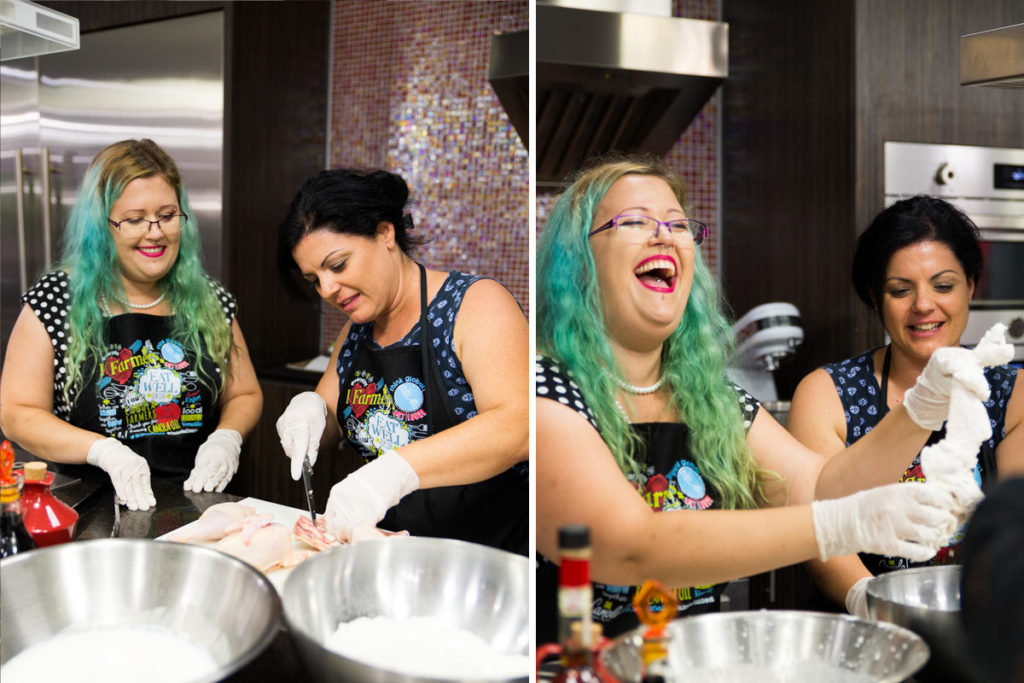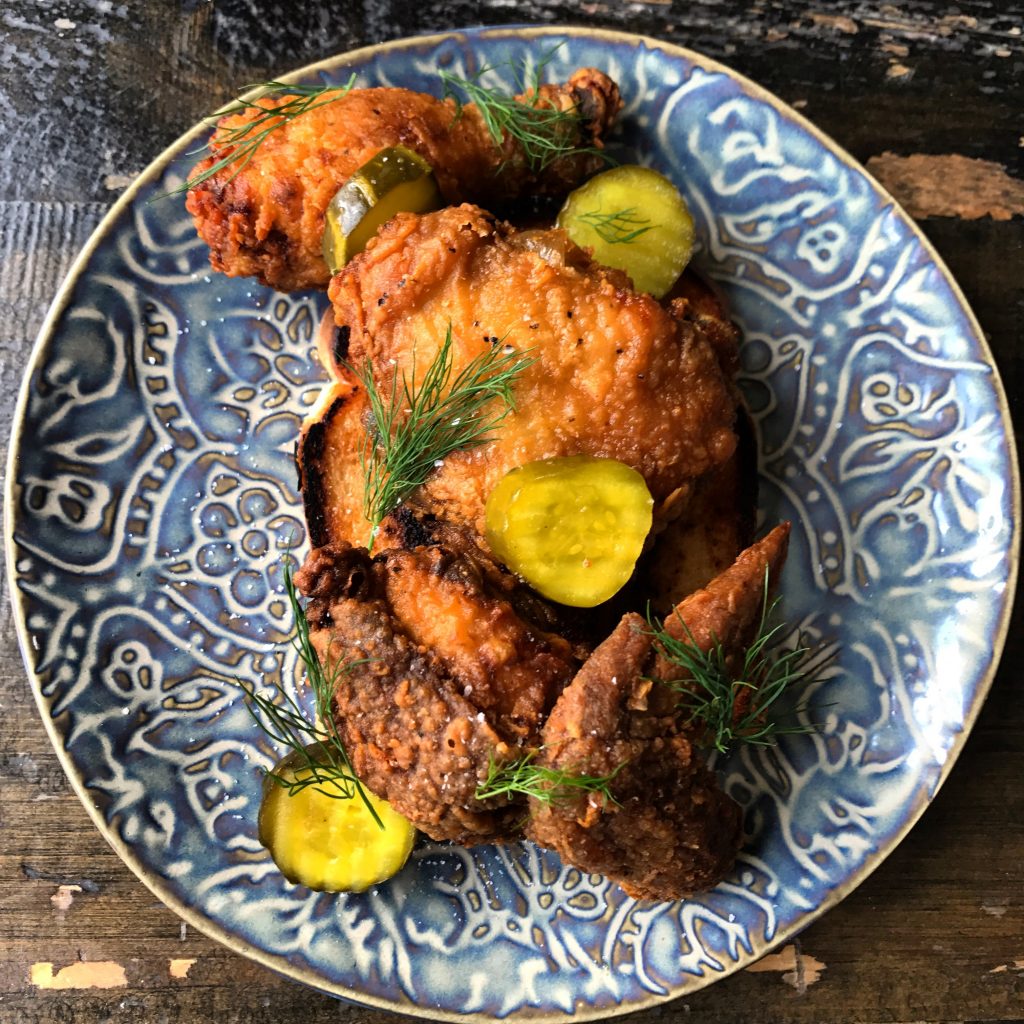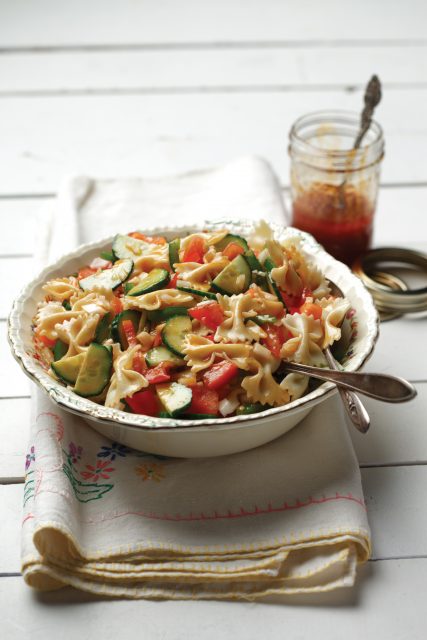Food Lessons
Grocery stores are a wonder, aren’t they?
When I really stop to think about it, I’m amazed at how far our food system has come.
In North America, we have access to just about anything we want, anytime we want it.
Grown, processed and packaged from producers all across the globe, we have the means to access food that even our parent’s generation would never have dreamed.
And while our access to food had dramatically increased, our connection to food, as in knowledge about how it’s produced and who is producing it, has taken a nosedive. We’re also moving further and further away from using whole, unprocessed ingredients in home food preparation, widening that knowledge gap even more.
Recently I was lucky enough to be part of a hands-on workshop with chef Matt Basile of Fidel Gastro fame, where I learned how to break down a whole chicken for homemade fried chicken.
Yes. Homemade fried chicken!!!

What didn’t surprise me about the workshop was that the four varieties of fried chicken Matt cooked up were dynamite (my personal favourite being the ultra mustardy Carolina Mustard Sauce).

What did surprise me was that Matt’s lesson about how to break down a whole chicken was met with total awe. With the exception of a few people, until that night, most of us had never attempted it ourselves. In just a few minutes, with nothing but a sharp knife and sturdy cutting board (along with a little mentoring from the expert himself), we managed to break down our chickens into eight perfectly fryer-ready pieces.

Matt taught us that buying whole chickens preserves all of the best flavour (skin and bones = flavour), reduces food waste and saves a whole lot of cash. And with his focus on sourcing Canadian chickens exclusively, he also gets to enjoy all those warm and fuzzy feelings of supporting his fellow Canucks.
I would like all of those things in my life too, please.
All of this got me thinking; while there is most certainly a place for convenience foods in today’s kitchen (real life is busy, I know), working with whole unprocessed ingredients and learning the basic skills needed to prepare them, even sometimes, can help to close the knowledge gap between food producer and consumer.
Buying a prepping a whole chicken can bring us one step closer to understanding how our food is produced and can make us feel invested.
And bonus: food just tastes better when you’re more invested in the process of making it.
Need a visual? Get started with this excellent video tutorial for breaking down a whole chicken, courtesy of Chicken Farmers of Canada.
What better reason to learn to how-to’s of sectioning a chicken than to make fried chicken at home! Here’s Matt’s recipe for Nashville Hot Chicken.
When you last bought chicken, what did you buy?
Breasts? Thighs? Legs? Wings? Boneless? Skinless?
Will you try ‘whole’ with your new found knowledge?
Erin MacGregor, RD, PHEc. Co-Founder HowToEat.ca





